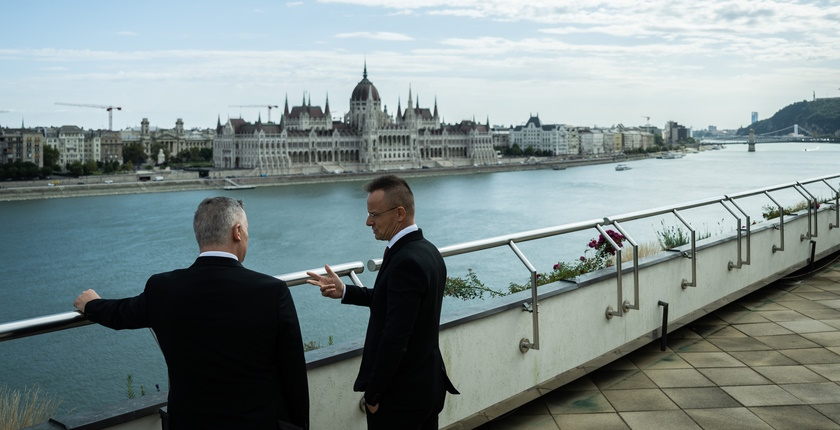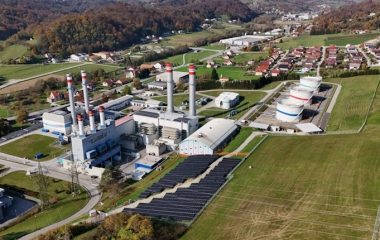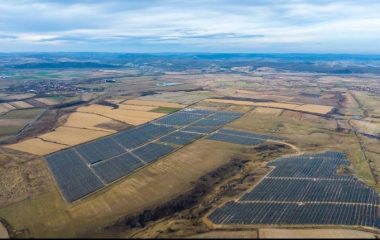
Slovenia’s and Hungary’s ministers meet in Budapest (photo: Péter Szijjártó/Facebook)
The energy crisis and the war in Ukraine have completely transformed the global energy landscape, causing tectonic shifts for Southeast Europe, primarily when it comes to natural gas. As it remains uncertain whether Russia will stay the region’s chief supplier, Southeast European countries, both EU members and those outside the bloc, are seeking to strengthen mutual ties, mainly by building new gas pipelines.
Hungary and Slovenia, for example, have agreed to build the first gas pipeline between the two countries, while Greece and North Macedonia are making final preparations for the construction of their first gas interconnector.
In this way, in addition to securing an alternative supply route, Hungary and North Macedonia will also have the opportunity to import liquefied natural gas (LNG), which is emerging as the main alternative to Russian gas delivered through pipelines.
Another gas interconnector in the region, between Serbia and Bulgaria, is close to completion.
According to Serbian Minister of Mining and Energy Dubravka Đedović Handanović, who recently visited the construction site, 92% of the works on the pipeline route have been completed, while the Dimitrovgrad and Pirot gas metering stations are almost finished and the rest is in an advanced stage.

Dubravka Đedović Handanović visits the gas pipeline construction site with Dušan Bajatović, director of state gas company Srbijagas (photo: LinkedIn)
Hungary will be able to import LNG via Italy
Slovenian Minister of the Environment, Climate, and Energy Bojan Kumer has signed a memorandum of understanding on natural gas supply with Hungarian Minister of Foreign Affairs and Trade Péter Szijjártó.
The purpose of the memorandum, signed in Budapest, is to define cooperation in establishing an interconnection between the two countries’ gas pipeline networks, the Government of Slovenia has said.
The memorandum calls on the two ministries to do everything in their power to enable the national gas system operators to build a two-way gas pipeline with a capacity of 50,000 cubic meters per hour, or 440 million cubic meters per year, with an operating pressure of 45 bar.
Szijjártó: Hungary is linked with all its neighbors with power transmission lines, but not gas pipelines
In addition, the ministries will work on signing a gas supply agreement between the two governments as soon as possible, or once the interconnection between the two systems is established.
Minister Péter Szijjártó noted that Hungary is connected with all of its seven neighbors with power transmission lines, but not gas pipelines.
The memorandum with Slovenia means that an interconnector linking the two countries’ gas pipeline systems will be built within two years, according to him.
The interconnection, he said, will not only help improve the security of supply, but will also give Hungary access to the Italian gas market.
This means that, in addition to the LNG terminal in Croatia, Hungary will have one more source of LNG available, Szijjártó explained.
Greece-North Macedonia gas pipeline could also transport green hydrogen

Greece’s National Natural Gas System Operator (DESFA) and North Macedonia’s state-owned natural gas transmission company Nomagas have signed a contract on the supervision of the construction of North Macedonia’s section of the 123-kilometer gas interconnector between the two countries.
The contract concerns the supervision of works on a 68-kilometer gas pipeline in North Macedonia, which is expected to be completed by the end of 2024, said DESFA, which was awarded the supervision job in a tendering procedure.
The interconnector will run from Nea Mesimvria to Negotino via the Evzoni/Gevgelija crossing. Its initial capacity will be 1.5 billion cubic meters per year, with the possibility of expanding it to 3 billion cubic meters per year. DESFA also said that studies have been carried out for the pipeline to adopt the appropriate requirements for the transportation of green hydrogen.
The contract was signed by DESFA CEO Maria Rita Galli, and Nomagas CEO Bajram Redžepi.


















Be the first one to comment on this article.